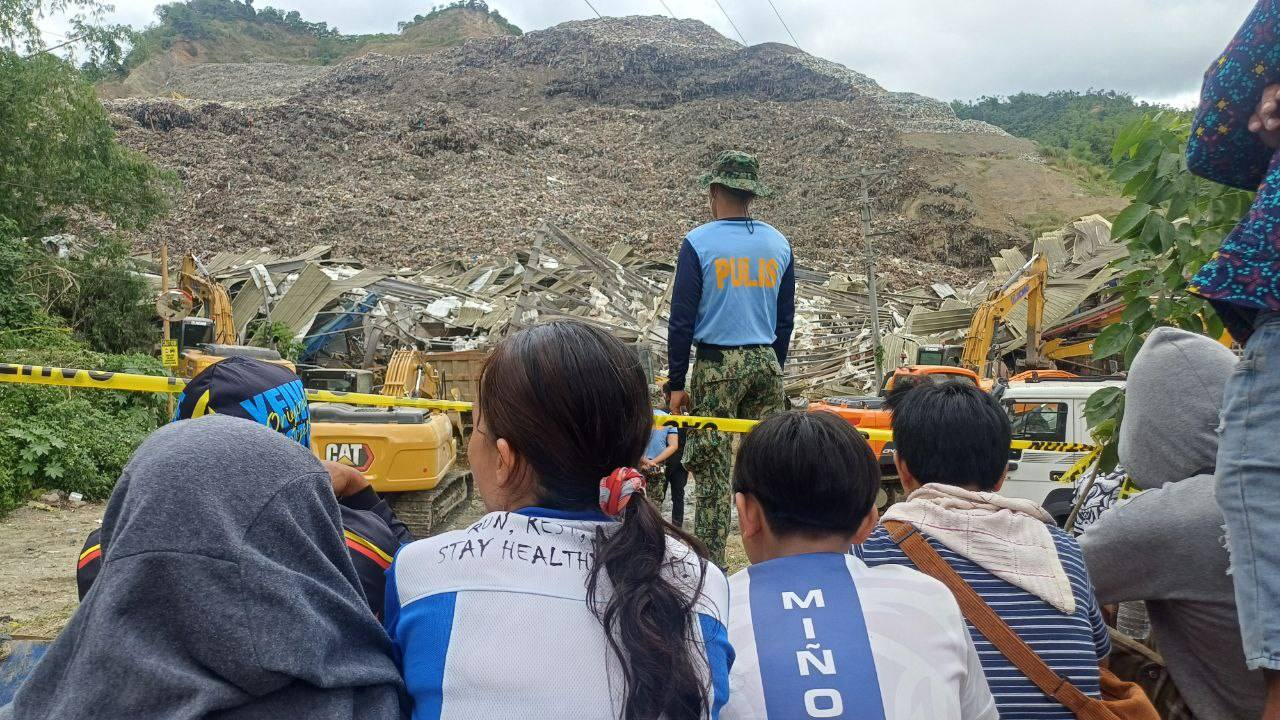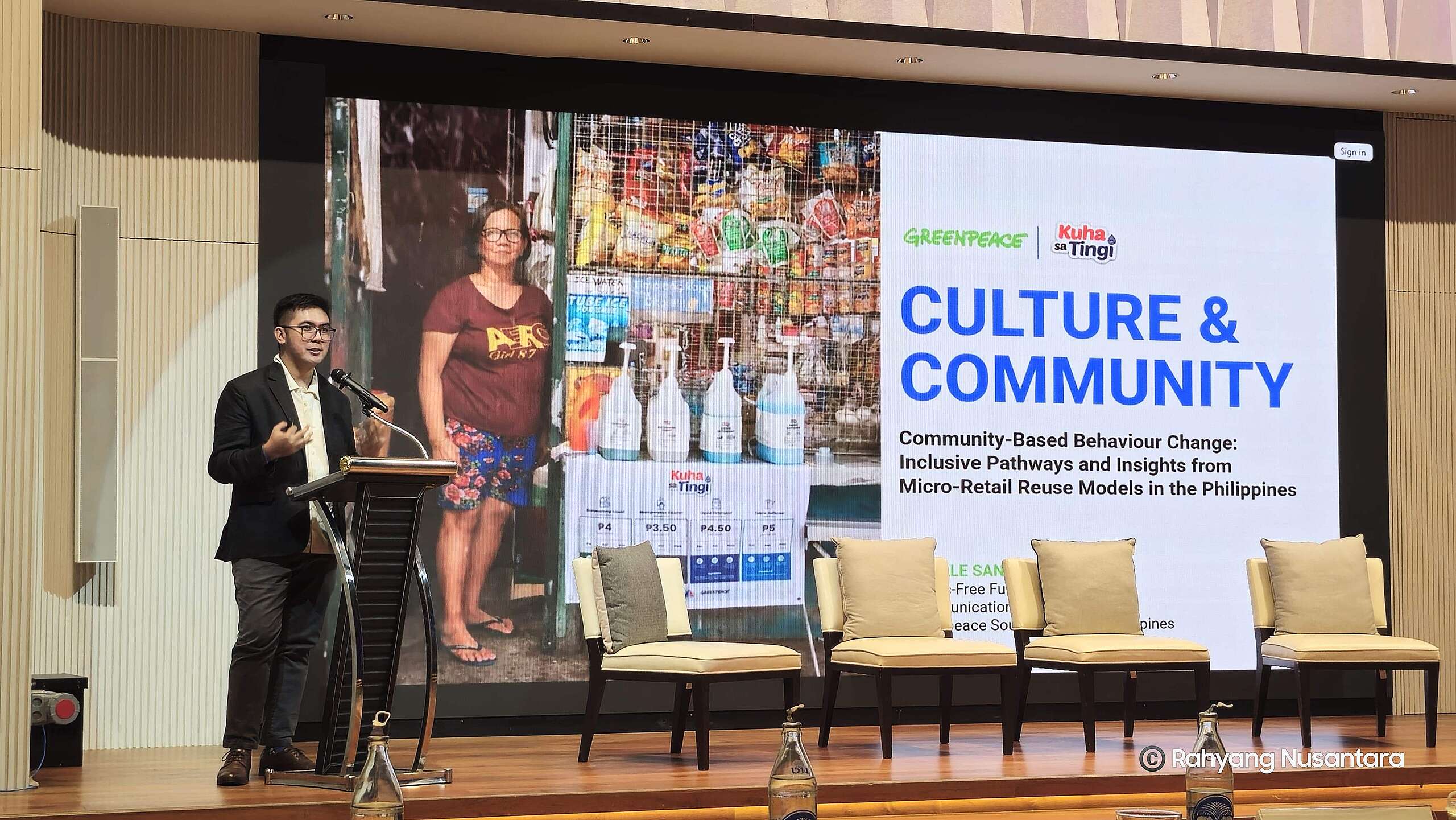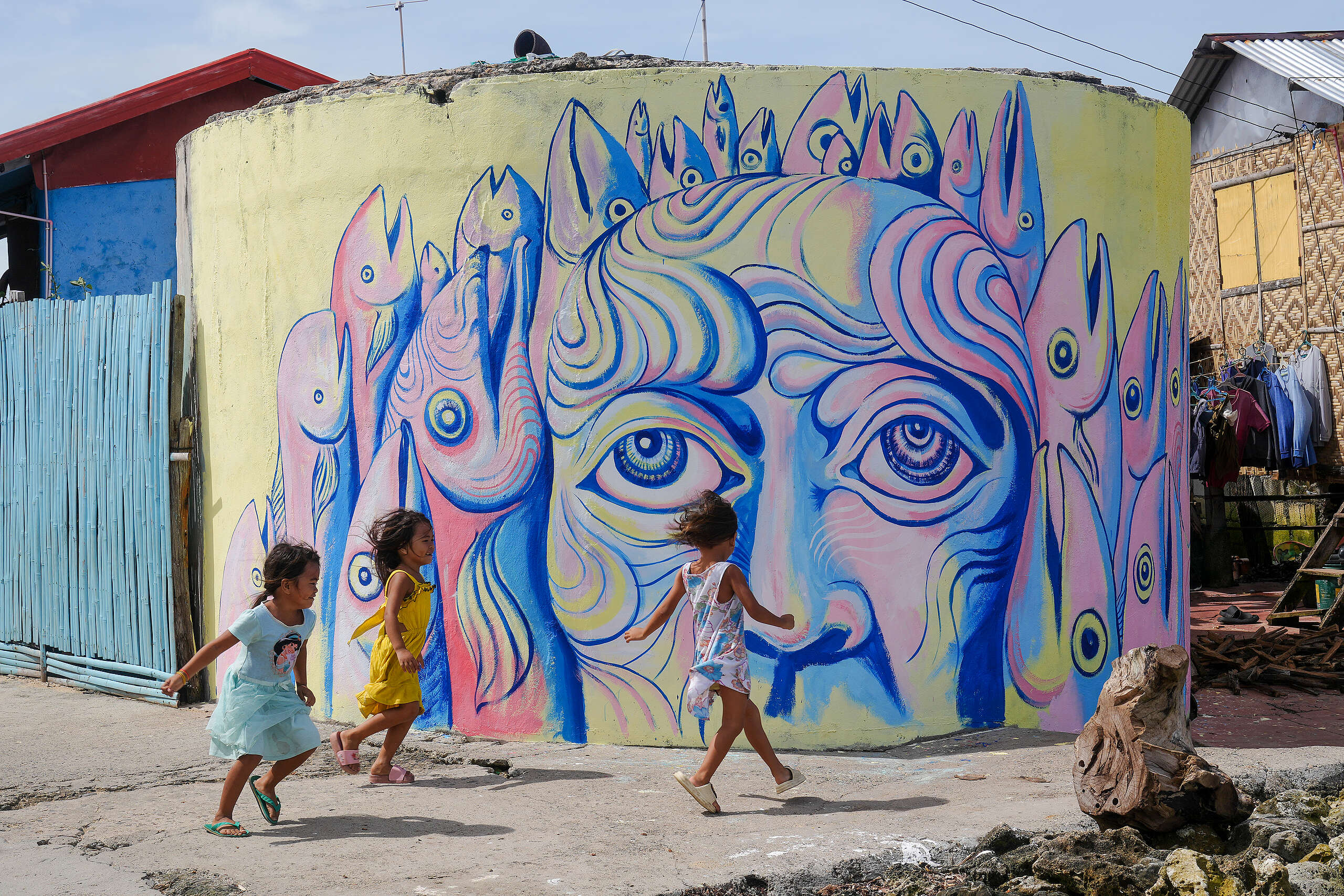Plastic pollution’s connection to the triple planetary crisis, social issues, and health conditions has been documented across the entire plastic lifecycle—from extraction to disposal. The widespread reliance on plastics derived from fossil fuels and compounded by toxic additives,1 as well as continued utilization of single-use plastics by corporations, has led to serious environmental, social, economic, and human health impacts across different sectors and socioeconomic backgrounds. This had led to United Nations member states unanimously agreeing on a historic resolution to create a global agreement to end plastic pollution through a comprehensive approach that addresses the full life cycle of plastic. As a country heavily impacted by both the plastic and climate crises, there is much at stake for the Philippines to secure an ambitious legally binding instrument that will protect people and the planet from harms throughout the plastic lifecycle.
The Plastic Pollution is a Public Health Emergency
The toxicity of these plastics increases when they leach into the environment, are used in medical procedures, or are ingested by humans throughout the plastic lifecycle. This exposure carries significant risks associated with endocrine-disrupting chemicals,2 which have been linked to diseases including cancer, diabetes, reproductive disorders, neurodevelopmental impairments, and immune system suppression.
The plastics treaty presents an opportunity to protect both humans and the environment; however, it must address the full life cycle of plastics. From production to disposal, plastic’s life cycle exposes communities and consumers to dangerous pollutants and chemicals. The healthcare sector is not exempt from harms—common plastics make up approximately 70% of all medical products, and the primary plasticizer in medical devices, DEHP, is classified as toxic. These pose higher risks during essential medical procedures.
Plastic Drives the Climate Crisis
Plastics are a significant contributor of greenhouse gas emissions in the Philippines. Out of the 61,000 metric tons of waste generated in the country daily, 24 percent of this is plastic waste,3 with most ending up in our landfills, contributing to methane emissions and making waste disposal a significant GHG-emitting sub-sector.4 More significantly, 90% of quantifiable emissions are produced in the fossil fuel extraction, conversion, and production stages of the plastic lifecycle.5 Only 10% is released in the midstream and downstream stages. At global levels, global production of primary plastics generated about 2.24 gigatonnes of carbon dioxide equivalent (GtCO2e) in 2019.6
The production, disposal, and burning of plastic produce greenhouse gas emissions, adding to catastrophic climate change and making the Philippines even more vulnerable to climate impacts. Plastic also exacerbates climate impacts. Plastic waste ends up in our drainage systems, worsening floods induced by typhoons or extreme rainfall events that threaten entire barangays.
Plastic Pollution’s Impact on Nature and Food Security
From the deepest part of the ocean7 to the world’s highest peaks and remote islands,8 plastic pollution has become inescapable and has led to devastating environmental degradation. In the Philippines, studies from Filipino scientists have confirmed the presence of microplastics in the country’s waters, air, and soil.9,10,11 Globally, recent estimates suggest there are now more than 170 trillion particles of plastic in the oceans. Plastic pollution has also harmed animals on land and at sea due to ingestion, entanglement, habitat destruction, and leaching of toxic chemicals, some of which disrupt animal hormone systems.
Plastic’s impact on ecosystems directly threatens food security. Plastic particles have become pervasive in agricultural and aquatic areas, leading to the disruption of soil functions and the growth and development of plants. It also leads to contamination of food sources and the very food we eat, worsening people’s exposure to microplastics and toxic additives.
Plastic as an Economic Bane to Sectors and Communities
The plastic lifecycle’s production of greenhouse gases has grave implications for countries’ economies, as one study estimated that the global social cost of plastic’s carbon emissions amounts to $341 billion annually.12 Plastic pollution is estimated to result in a 1-5% reduction in marine ecosystem services, equating to annual losses of $500 billion to $2.5 trillion. Approximately, this is Php 1.86 million per metric ton of marine plastic pollution.13
These losses are directly felt in our coastal and farming communities. Filipino fisherfolk grapple with disruptions to their livelihood as plastic waste damages fishing gear and vessels, pollutes marine habitats, and contaminates seafood with microplastics.14,15,16 These have significant financial costs for repairs, replacement materials, and income and time lost for cleaning or mending gear. Studies have also revealed widespread plastic pollution in agricultural soils, affecting soil health and land fertility.17
Plastic Pollution as a Human Rights Concern
The entire plastic lifecycle affects human rights. The harms begin with destructive extraction and the presence of hazardous chemicals and emissions in manufacturing. It continues with consumers’ exposure to toxic additives, disinformation about plastic’s impacts, and unsafe waste management. No less than our Philippine Constitution, under Article II, Section 16, guarantees the right of every Filipino to a balanced and healthful ecology. But this right is being steadily undermined by the plastic crisis. The United Nations warns that humans are now eating, drinking, and breathing plastics.18 The burning of plastic waste in industrial facilities across the country releases harmful emissions and persistent organic pollutants. Scientists from the National Research Council of the Philippines found microplastics in many water bodies,19 and other studies confirm microplastics even in consumer food products.20 This isn’t just pollution, it’s poison disguised in everyday life, threatening our right to health, to eat, to breathe, and to enjoy our environment freely.
Unequal Distribution of Harms Across the Plastic Lifecycle
The plastic crisis’ social and environmental costs disproportionately affect marginalized communities and groups already made vulnerable by broken systems. Plastic’s impacts are not evenly distributed, as low-income communities, indigenous peoples, women, children, small islands, and workers in the informal sector bear more of the negative consequences.
With so many Filipinos already struggling with poverty, limited access to healthcare, and clean water, plastic pollution only adds to the burden. Globally, extraction of fossil fuels, which make up 99% of plastics, occurs in indigenous territories, while landfills and facilities burning plastic are located in areas with predominantly low-income populations. Waste workers play a critical role in addressing plastic pollution but are consistently at risk due to unsafe work conditions, exposure to toxic substances, and lack of social protections. A UNEP study shows that, on top of the burden of caregiving and household chores, the prevalent use of plastics disproportionately exposes women to toxic additives like BPA and dioxins, with higher exposure for older women and those in areas burning plastic waste.21
Plastic’s Intergenerational Impact: Burdening the Youth and Future Generations
The pollution and serious consequences caused by plastic throughout its full life cycle are not just transboundary but also transgenerational, threatening the well-being and rights of people at present and for generations to come. Children are one of the most vulnerable sectors affected by the plastic crisis. As plastic production is projected to increase, and with it an increase in the scale and severity of plastic’s impacts, young people will be burdened the most. Our next generations will also be inheritors of plastic pollution. Such harmful pollution should not be the legacy we leave future generations. Instead, we must take action to ensure we safeguard our people and country from the harms of plastic.
Recommendations for a Treaty to End Plastic Pollution and Achieve Environmental Justice
In response to these impacts, the undersigned organizations and individuals are calling on the government to:
- Maintain support for a global target to reduce the production of primary plastic polymers. Uncontrolled global plastic production presents financial risks, undermines efforts for a circular economy, and impacts human health, ecosystems, and the climate. Upstream actions, including production reduction and bans, are 2-3 times more cost-effective. This global target must be subject to periodic review, supported by measures at the national level, and have mandatory reporting.
- Support the phaseout of the most common single-use and short-lived plastic products, alongside chemical groups proven to be hazardous to human and environmental health. The treaty must have global lists for the phaseout of these products and chemicals, and establish a process to agree on criteria to determine them, as well as a permanent scientific review committee to assess lists as new information becomes available.
- Establish zero-waste approaches, such as reuse systems and advancement of reuse practices, which support the Philippines’ goal of transitioning to a circular economy in addition to achieving treaty objectives. Reuse and refill systems should be enabled across different articles with measures to set targets for reuse and provisions to establish systems. Binding obligations to adopt minimum requirements on product design and performance are also necessary.
- Retain Article 19 on Health and establish binding obligations to prevent health impacts from plastics through dedicated strategies and programs that uphold environmental rights and ensure safe, healthy environments. A dedicated program of work on healthcare plastics requires priority action, not a blanket exemption, which increases exposure risk. Additionally, the roles of global health organizations, such as the World Health Organization (WHO), should be acknowledged, and safe waste management should be ensured through toxic-free products, ending waste-burning technologies, and guaranteed protections for waste workers.
- Engage stakeholders and rights holders with consultations, and ensure the inclusion and participation of youth, small businesses, and affected workers in the development of the treaty. We urge a strong, binding plastics treaty protecting all affected individuals, particularly waste workers, youth, and women, ensuring their health, safety, and inclusion in decision- and policy-making.
- Include provisions for an effective instrument, such as trade measures and a robust financial mechanism. A newly established, hosted multilateral fund is necessary to ensure effective and impactful implementation of control measures. A remediation fund to access private sector funding is also recommended.
- Develop a treaty utilizing a human rights-based approach, just transition, and environmental policy principles. Such concepts must be integrated throughout the treaty and reflected in the Philippines’ just transition framework.
Signatories:
- Greenpeace Philippines
- Aksyon Klima
- Health Care Without Harm Southeast Asia
- Ecowaste Coalition
- Mother Earth Foundation
- Negrosanon Initiative for Climate and the Environment
- Philippine National Waste Workers Association (PNWWA)
- Planetary Health Philippines
- Ecoteneo – Ateneo de Davao University
- PANGISDA-Pilipinas
- Environmental Studies Institute
- Alyansa Tigil Mina (ATM)
- Green Convergence
- Philippine Rural Reconstruction Movement
- BAN Toxics
- Environmental Studies Institute – Miriam College
- Manila Observatory
- 350 Pilipinas
- Archdiocese of Manila Integral Ecology Ministry
- 350.org Asia
- Interfacing Development Interventions for Sustainability (IDIS)
- Arugaan
- Nuclear/Coal-Free Bataan Movement
- Gubat Eatery
- Caritas Philippines
- Break Free from Plastic (BFFP) Asia Pacific
- Global Alliance for Incinerator Alternatives (GAIA)
- HOPE KABABAIHAN Group
- DRRNetPhils
- Zero Waste Baguio, Inc
- Tingi Station
- Back to Basics Ecostore
- Diocese of Imus Ministry on Ecology
- 8 Villa Beach House
- Davao Central College
- Barangay San Roque Fisherfolks Association (BFSRA)
- Pangasinan People’s Strike for the Environment
- Hugpong Gagmay’ng Mananagat sa Sawsawan (HGMS)
- San Roque Community for Empowerment (SCORE)
- Angat GenC
- Prof. Marlon Pareja, De La Salle University – Dasmarinas
- Young Bataeños for Environmental Advocacy Network (Young BEAN)
- Green Party of the Philippines
- Bayanihan Para sa Kalikasan Movement, Inc. (BKM)
- Philippine Earth Justice Center
- 5pcs Daily Habit
- Samahan ng mga Mangangalakal sa Bagong Silang
- Samahan ng mga Mangangalakal sa San Vicente Ferrer Camarin Caloocan City
- Samahan ng mga Mangangalakal ng Scrap sa Capulong
- Nagkakaisang Lakas ng Mangangalakal sa Longos
- Kalipunan ng Samahan ng mga Mangangalakal at Junkshop ( KASAMAJ)
- Pinag-isang Samahan ng mga Mangangalakal ng Longos at Capulong (PSMLC)
- Sulubaai Environmental Foundation inc
- Immaculate Heart of Mary College Paranaque
- Communication Foundation for Asia
- Salin PH
- Negros Workers Development Center
- Negrosanon Young Leaders Institute Inc. – Climate Solutions Center
- Food Not Bombs
- Food Not Bombs Bacolod City
- MARCEA Waste Workers Association
- Bagong Silangan Resource Collectors
- San Pablo Apostol Parish, Tondo Manila
- Kaabag sa Sugbo Foundation Inc.
- SBS Idinayale
- The Climate Reality Project Philippines
- Break the Cycle Philippines
- San Antonio de Padua Parish – Commission on Social Services & Development Ministry on Ecology
- Tangkay Organization
- DAKILA
- EARTH – UST
- Médecins du Monde
- World Wide Fund for Nature Philippines
- 2030 Youth Force in the Philippines Inc.
- Kaunlaran para sa Kultura + Kalikasan, Inc
- Bukid ni Bogs
- Eco Habit
- Sentinel Upcycling Technologies
- Save Sierra Madre Network Alliance
- War on Waste Negros Oriental
- Ecomove Courier Services
- Ateneo Institute of Sustainability
- Pure Oceans
- Leaven of the Immaculate Heart of Mary Sisters
- Justitia Lab
- Bethlehem Christian Life Community
- Jungle Gym Play Laboratory
- Global Changemaker Schools
- MASIPAG
References:
1 https://www.mdpi.com/1660-4601/17/4/1212
2 https://www.sciencedaily.com/releases/2024/02/240226204702.htm
5 https://www.oecd.org/en/topics/sub-issues/plastics.html
6 https://escholarship.org/uc/item/12s624vf
7 https://www.sciencedirect.com/science/article/pii/S0308597X17305195
8 https://www.pnas.org/content/114/23/6052
9 https://pmc.ncbi.nlm.nih.gov/articles/PMC10298413/
10 https://pubmed.ncbi.nlm.nih.gov/36859643/
11 https://www.tandfonline.com/doi/full/10.1080/15320383.2024.2388750
12 https://annalsofglobalhealth.org/articles/10.5334/aogh.4056
13 https://www.ncelenviro.org/articles/first-in-science-the-economic-impacts-of-plastic-pollution/
14 https://nrcp.dost.gov.ph/the-growing-threat-of-microplastics-and-plastics/
15 https://newsinfo.inquirer.net/1600685/microplastics-invisible-bane-to-ph-fishermen
16 https://doi.org/10.1016/j.marpol.2021.104846
17 https://www.unep.org/resources/emerging-issues/plastics-agriculture-environmental-challenge
18 https://docs.un.org/en/A/76/207
19 https://nrcp.dost.gov.ph/the-growing-threat-of-microplastics-and-plastics/
20 https://doi.org/10.1007/s13197-024-05978-2
21 https://wedocs.unep.org/bitstream/handle/20.500.11822/35417/EJIPP.pdf



